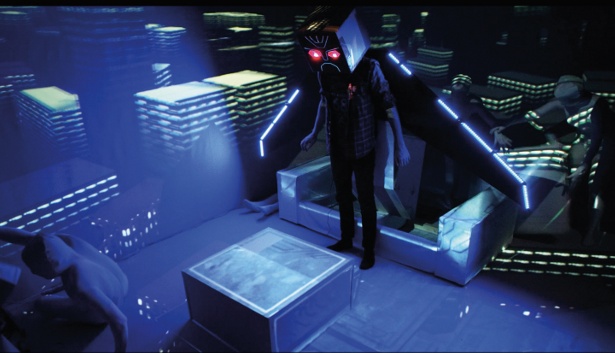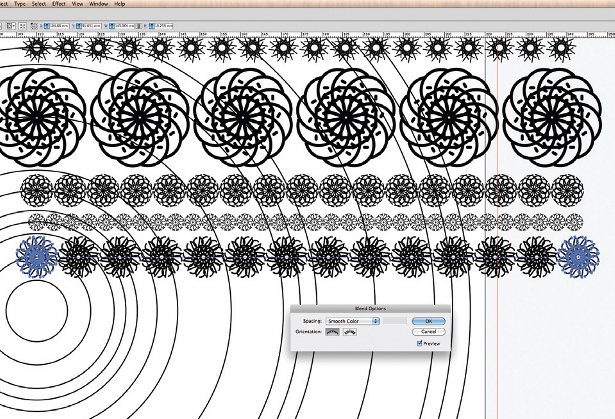Projection mapping comes of age
Projection mapping enables you to grab people's attention by moulding reality. So what does it actually involve?

NuFormer’s first attempt at projection mapping in 2009 threw the studio in at the deep end: “Instead of testing on a small object first, we went straight to a large and complex building,” he says. “The faade had pillars and different depths. We believed that if we could map that building perfectly, and have our 3D content matching it exactly, then we could do any building in the world. And this experiment turned out really well.”
Since 2009, NuFormer has gone on to work on exciting projection mapping projects for global clients. Projects have ranged from turning a building in Madrid into a giant pinball machine for Sony during the Champions League final, to projecting onto two office blocks in Singapore for the launch of a new BMW campaign, and a stunning 3D projection onto the Beurs van Berlage building in Amsterdam for Samsung.
For the latter, NuFormer based the projection on existing Samsung campaign visuals: “We modelled and animated butterflies and fish by hand,” recalls Delfgaauw. “The animators closely watched video of a goldfish swimming so they could give the 3D model a natural appearance. It also had very nice sound effects and perfect timing, which is important to communicate the right feeling.”

Delfgaauw is particularly impressed by the scale that can be achieved: “It’s great to see how well it works, if the content matches the architectural details of a building precisely,” he enthuses. “Until we see it in real time, projected on the faade, the displays on our desks are the only reference.” With live outdoor projection, of course, the other element is the audience – and according to Delfgaauw they never fail to be impressed.
Of course, the assembled crowd is nothing compared to the online audience when the clips go viral, as was the case with the Samsung project – which clocked up half a million online views in its first fortnight. “It’s probably the most viewed video-mapping projection on the web,” he beams.
While all of the above is considerably more accessible and affordable than it was 10 years ago, Bird points out that individual designers will likely struggle to bring all the necessary skills and knowledge to the table. “Collaboration is key,” he advises, “whether that be with other designers, programmers, animators, event managers and so on.”
Sebastian Seelig co-runs VJ collective VLIGHT.TO as a side project alongside design studio V2A.NET, based in Essen, Germany. Having developed bespoke VJ software – VLIGHT.MXR – the team has experimented with live projection mapping, integrating its software with mixing package Modul8 and video-mapping tool MadMapper.

“What excites us most is transferring flat projections into 3D space, to give it a haptic touch,” explains Seelig. “It’s impressive to have such a major influence on an otherwise static object and to reshape a 3D body just by the use of light.” VLIGHT. TO’s first opportunity to explore the technology was dance music event Soulcialism, where the collective was asked to design the whole stage set-up, rather than just VJing on existing screens.
If there’s one thing on which all the studios we’ve spoken to agree, it’s that projection mapping – which began its surge in popularity a few years back – is yet to reach its peak potential. “That’s a bit like asking if advertising has yet to reach its full potential,” shrugs Projection Advertising’s Emily Gibson. “This is a medium that is here to stay.”
In order to really get the most from the technology, according to Gibson, it can pay to collaborate with an experienced projection company that’s already had a chance to smooth out the kinks in the process. “There are so many surprises: a concept on screen and on a small, or test, basis can be straightforward – but it’s very easy to get things wrong,” she warns.

“There are many more things that can be done,” agrees NuFormer’s Delfgaauw. “The use of video recognition techniques, Kinect, infrared and many more technologies can all be used to make the technology more attractive and interactive.” Naturally, high levels of interactivity with an audience tend to increase levels of engagement – and they also raise the bar.
“As the market becomes more and more familiar with video mapping, it will become more demanding,” he concludes. “Creativity and originality, together with solid and professional project organisation, will make the difference in the near future.”
Daily design news, reviews, how-tos and more, as picked by the editors.

The Creative Bloq team is made up of a group of art and design enthusiasts, and has changed and evolved since Creative Bloq began back in 2012. The current website team consists of eight full-time members of staff: Editor Georgia Coggan, Deputy Editor Rosie Hilder, Ecommerce Editor Beren Neale, Senior News Editor Daniel Piper, Editor, Digital Art and 3D Ian Dean, Tech Reviews Editor Erlingur Einarsson, Ecommerce Writer Beth Nicholls and Staff Writer Natalie Fear, as well as a roster of freelancers from around the world. The ImagineFX magazine team also pitch in, ensuring that content from leading digital art publication ImagineFX is represented on Creative Bloq.
